What is tribal sovereignty?
Tribes existed as nations long before the creation of the United States. Tribal sovereignty is recognized in the U.S. Constitution, in treaties with the United States, and in acts of Congress. This sovereignty means that each tribe has the right to govern itself and interact on a government-to-government basis with local, county, state, and federal units of government.
The SMSC was federally recognized as a sovereign nation in 1969. As a sovereign nation, the SMSC government is responsible for providing for the well-being of Community members with infrastructure such as roads and sewers, housing, and more.
Does the SMSC have a government?
As a sovereign nation, the SMSC government maintains authority over its membership, lands, and government affairs. The SMSC is governed by the General Council, consisting of all enrolled SMSC members ages 18 and older, and the Business Council, consisting of three members elected every four years by the General Council. The Business Council is responsible for day-to-day operations and the implementation of General Council decisions.
Where is the SMSC reservation?
The SMSC's tribal lands are located in Prior Lake and Shakopee, Minnesota – about 30 minutes southwest of Minneapolis.
What is trust land?
Federal law allows for the Secretary of the Interior, on behalf of the United States, to take ownership over lands specifically for an Indian tribe. This ownership status places restrictions on how the land can be legally encumbered. The specific purpose in providing for trust status over tribal lands is to restore lands that were historically stolen from or lost by Native American tribes, and then to permanently protect those lands from similar loss. Trust status also brings the land into the governmental control of the tribe. All SMSC laws and most federal laws apply on trust lands. Trust lands are not subject to the civil regulatory authority of state, county, or city governments. State law enforcement in Minnesota does exercise criminal jurisdiction over all persons on SMSC trust lands.
Why does the SMSC continue to request that more land be placed into trust?
The stated purpose of the SMSC tribal government is to secure the advantages of self-government for its tribal members and for its future generations. Land for residential uses and economic development is essential for the SMSC to meet its responsibilities to its tribal members. Land in trust status provides the best protection that the SMSC's lands will be available for these essential purposes for generations to come. Trust status for its lands provides the SMSC with the best opportunity to exercise self-government over the activities on those lands. Further, the SMSC has proven its ability to develop and manage its lands in responsible ways using best practices, so that not only the SMSC benefits, but the surrounding region benefits in many ways as well.
Does the SMSC pay taxes?
Yes, prior to having land taken into trust status, the SMSC pays property taxes on all lands that are held in fee. When land is taken into trust status, local property taxes no longer apply to those lands, because at that point the SMSC pays for all of the development and infrastructure costs associated with its lands – costs usually paid for by property taxes. The SMSC continues to make, and has a long history of making, voluntary intergovernmental payments to the local city and county governments for a variety of mutually beneficial purposes, including road improvement projects and police services. The SMSC also collects and remits a variety of state taxes, including sales tax pursuant to an agreement with the State of Minnesota. The SMSC also pays federal employment taxes.
Who pays for the SMSC’s infrastructure and essential services?
The SMSC funds the internal infrastructure of the tribe, including but not limited to roads, water and sewer systems, power lines, parks, water and wastewater treatment, storm water management, wellhead protection, zoning, building code enforcement, fire protection, ambulance service, police protection, and essential services in education, health, and welfare.
What does the word “Shakopee” mean?
“Ṡakpe” (pronounced “shock-pay”) is a Dakota word meaning the “number six.” It refers to a historic Dakota leader, Ṡakpe, who was the leader of a village that was located along the river where the modern city of Shakopee is located.
What does the word “Mdewakanton” mean?
Mdewakanton (pronounced Mid-ah-wah-kah-ton) means “dwellers of the spirit lake.”
What does the SMSC shield mean?

Each symbol of the Mdewakanton Dakota Shield represents an aspect of SMSC culture:
- The sacred pipe symbolizes the communication between man and a higher power. Used in prayers and ceremonies, the sacred pipe represents truth and balance.
- The tipi (a Dakota term which means “dwelling”) represents home, family, extended family, and council.
- The buffalo skull represents the buffalo, which gives completely of itself for others. The skull is present in many rituals to remind us to be generous and self-sacrificing.
- The arrowhead and ax are traditional tools, used to protect and provide for our people.
- The feathers on the shield represent the Seven Council Fires – the tribes that make up the Great Sioux Nation. They are the Mdewakanton, Sisseton, Teton, Wahpekute, Wahpeton, Yankton, and Yanktonai.
Who are the "Dakota" people?
We call ourselves “Dakota” people, meaning “friends” or “allies.” There are three main bands of the Great Dakota Nation, separated only by dialect and geography. Dakota, Lakota, and Nakota are the dialects.
The SMSC is one of the four Eastern Dakota bands collectively called the Santee. Their original land base was considered to be east to Lake Michigan, south to north central Iowa, west to the prairie, and north into the big woods. The Nakota resided mainly along the Mississippi and Missouri rivers. The Lakota were originally in northwestern Minnesota, the southern prairies of Canada, and eastern North Dakota, but they moved to the great western prairies west of the Missouri River as Europeans migrated west.
Today the Dakota tribes currently reside in the upper Midwest (Minnesota, North and South Dakota, Nebraska, Montana, and southern Canada). The eastern Dakota, or Santee, are made up of the Mdewakanton, the Wahpekute, the Sissitunwan and the Wahpetunwan. The western band, the Titunwan, are known today as the Lakota and are made up of seven sub-bands (the Sicangu, Oglala, Itazipco, Hunkpapa, Mniconjou, Sihasapa, and Ohenunpa). The Nakota (the Ihanktunwan and Ihanktunwanna) live between the Dakota and Lakota, generally along the Missouri River in southeast South Dakota.
Is the SMSC connected to any of the other tribes in Minnesota?
Minnesota is home to 11 tribal nations: seven Ojibwe and four Dakota. The Dakota tribes include the Shakopee Mdewakanton, and fellow Mdewakanton tribes, the Lower Sioux, the Upper Sioux, and Prairie Island. Each of these tribes is federally recognized and has a separate sovereign government.
What do you call people who belong to your tribe?
We refer to members of the SMSC as Community Members. Every tribe has its own preference for how to refer to its members.
What is the difference between a tribe, Community, or band?
Before European settlement, millions of Indigenous people made up of hundreds of tribal nations lived in what is now the United States, each with its own language, political structure, and traditions. Today, sovereign tribal governments most commonly refer to themselves as tribes, nations, communities, confederacies, or bands.
Who receives SMSC donations?
A strong tradition of helping others has defined the Dakota people for generations. Honoring that tradition, the SMSC continues to invest in its Members, neighbors, organizations and tribes across the state and country, working to build a better community for all.
Since opening the Gaming Enterprise in the 1990s, the SMSC has donated more than $350 million to organizations and causes, provided $500 million in economic development loans to other tribes, and contributed millions more to support regional governments and infrastructure.
Visit our donations page for more information.
How do I apply for a donation?
Visit our donations page.
Does the SMSC get a tax break for charitable donations?
The SMSC does not receive tax breaks or credits for charitable donations. Sharing is an integral part of our Dakota culture.
What enterprises are on the reservation?
The SMSC operates a variety of gaming, environmental, and convenience enterprises. Visit our enterprises page or view our Community Map to learn more.
What is tribal gaming?
By law, tribal casinos must be owned by tribal governments. Tribal governments that have gaming use it as an economic development tool to establish and support economic self-sufficiency and self-government.
Learn More About the SMSC
Read about our people or explore our historical timeline for additional information about the Shakopee Mdewakanton Sioux Community.
Shakopee Mdewakanton Sioux Community
2330 Sioux Trail NW
Prior Lake, MN 55372
952.445.8900
Contact a Department >












